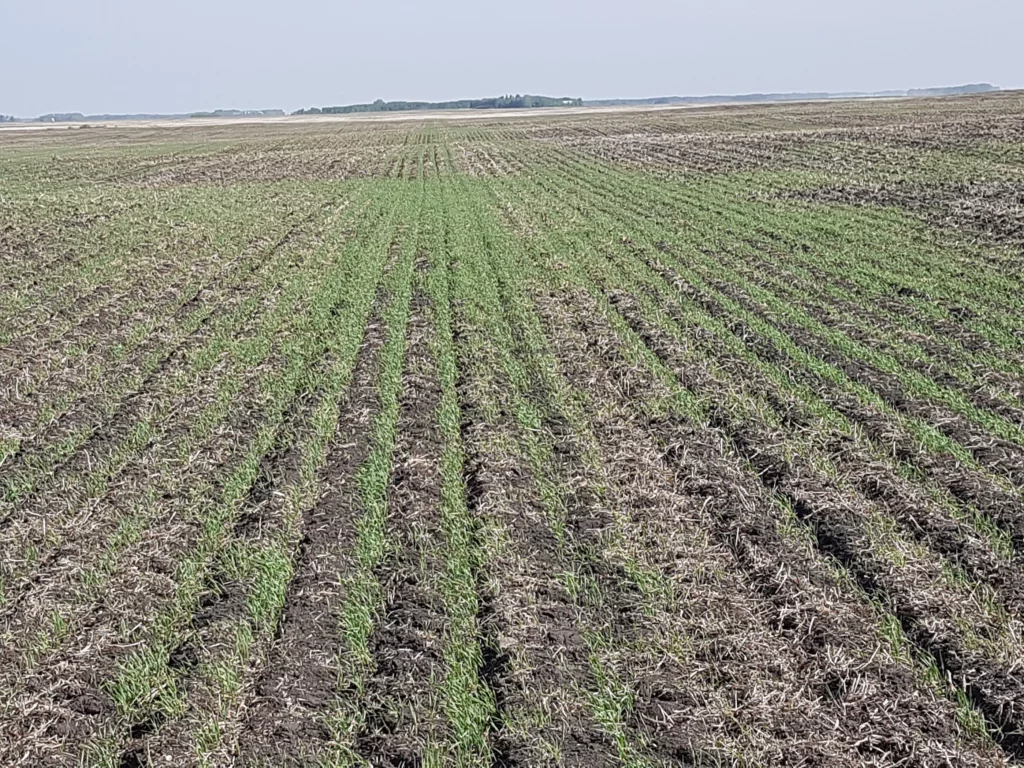Benefits of SWAT MAPS: Connecting Soil, Weeds, and Herbicides
This is the time of year where you are scouting or spraying a crop and may find yourself wondering, “Why is the foxtail barley so bad here?” Or, “Why didn’t the Avadex get these wild oats in that depression?” Or maybe, “Uh oh… looks like that pre-seed residual is hurting the lentils on the hill…”

There’s a lot of things going on within questions like these that I will cover in this post.
Most, if not all, soil applied herbicides (granular and liquid) have labelled rates based on soil attributes – most often texture and organic matter, and maybe pH which can also be important in residual carryover issues. In many cases, these herbicides are held on to fine soil particles or organic matter very tightly, and therefore require higher rates in clay soils or high organic matter soils. In fact, in some cases certain products are not recommended at all in high organic matter because they just won’t provide very good weed control. Focus is one example of that. Breakdown of herbicides can also be greatly affected by soil pH and moisture. ‘Imi’ herbicides, for example, are slower to break down in acidic soils compared to alkaline soils. So in a field such as the one below – we’d definitely expect the worst carryover issues from Odyssey to be in zones 1 and 2, if they occurred. Those zones are high and dry, have the most acidic soil, and likely the least amount of overall biological activity to break down herbicides.
But where the real value of a SWAT MAP and VR capability might be is getting better control of weeds with whatever soil applied herbicide you use, avoiding crop injury, and maybe even saving money. Three examples are shown in table 1 below of some common products and their rates that should be applied based on the product label and soil in each part of the field.

With Edge, for example, the highest label rate would provide better control of target weeds in the high organic matter loam, while the low rate should be fine for the low organic matter sandy loam on upper slopes and knolls. The field average rate in this case works out slightly lower than the rate that would likely be used in flat rate (19.6 lbs) – yet would likely provide a better weed control experience. A prescription could easily be written for a floater or Valmar that is VR capable to spread granular herbicides, or for a product such as Focus or Authority through a sprayer the rate would be managed by adjusting water volume in each zone. You can learn more about this on our YouTube channel here.
One of the biggest benefits can be avoiding phytotoxicity issues in the current crop or residual carryover in next year’s crop with certain products. A common situation is the typical use rate being too high for sandy, low OM knolls as an example – so the ability to cut back the rate in those areas or not apply at all could really reduce the chance of any crop injury.
It’s also worth noting there are many species of weeds that are strongly associated with certain soils or landscape positions. Kochia and foxtail barley are often indicators of salinity, even if it is slight. Hempnettle and smartweed seem to like rich topsoil depressions. Dock thrives in very wet depressions prone to flooding. Barnyard grass also likes wet, heavy texture soil... the point is nature shows us soil and water variability. With the ability to map it, we can take advantage of this and only treat certain areas, or treat different areas with different rates, whether it’s with a sprayer by water volume, strategic tillage, or even with varying seeding rates to improve crop competitiveness – the most important part of weed control.
Which leads into my next topic – how can we use seeding rates to improve profitability on the farm? Stay tuned for a discussion on this in the next post.
Wes Anderson, PAg
Senior Fertility Specialist - Croptimistic Technology Inc.
wes@croprecords.com








